Truffle-crusted fillet with montioni montefalco rosso reduction
T r u f f l e - c r u s t e d f i l l e t w i t h m o n t i o n i m o n t e f a l c o r o s s o r e d u c t i o n
Welcome back to the Montioni Blog, the space where you can find all the recipes sent by all our customers and paired with Montioni products!
The recipe of this week comes directly from the kitchen of the Azienda Agricola Montioni, as we would like to share with you our personal recipe of truffle-crusted tenderloin with Montefalco Rosso reduction, directly from the Montioni cellar.
Let’s see what ingredients are needed and how to cook this dish paired with an excellent Montioni red wine!
RECIPE: TRUFFLE-CRUSTED FILLET WITH MONTEFALCO ROSSO REDUCTION
Ingredients
– 500 gr beef fillet
– Puff pastry
– 1 truffle
– 1 glass Montefalco Rosso DOC
– 1 egg
– flour to taste
– sage
– rosemary
Pairing Between Kitchen and Cellar

Crusted-truffle fillet pairs perfectly with a red wine such as Montioni Montefalco Rosso DOC, with a strong but not intrusive flavour.
A typical Umbrian wine that goes well with meat and enhances the great taste of the truffle.


Method
1) Flour the meat medallions and cook them in a pan with Montioni EVO oil.
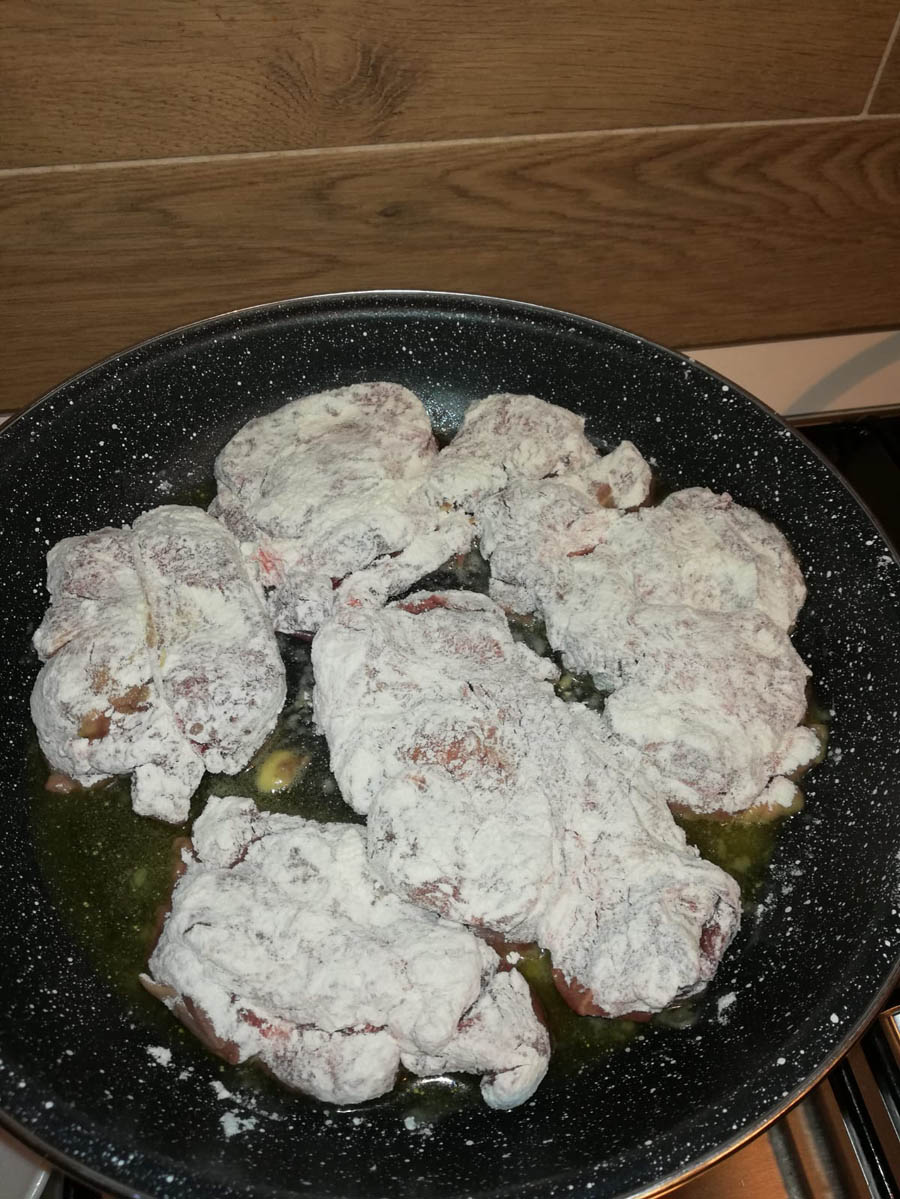
2) When cooked, let them cool and set aside for the next steps of the recipe.
3) In the meantime, take the truffle and grate it.
4) Roll out the puff pastry on the table and place one medallion on it at a time.
5) Take the grated truffle and spread it over each medallion.
6) Wrap each medallion with the truffle filling and close with the puff pastry.
7) Beat the egg and brush over the entire surface of the freshly prepared medallions with a kitchen brush.
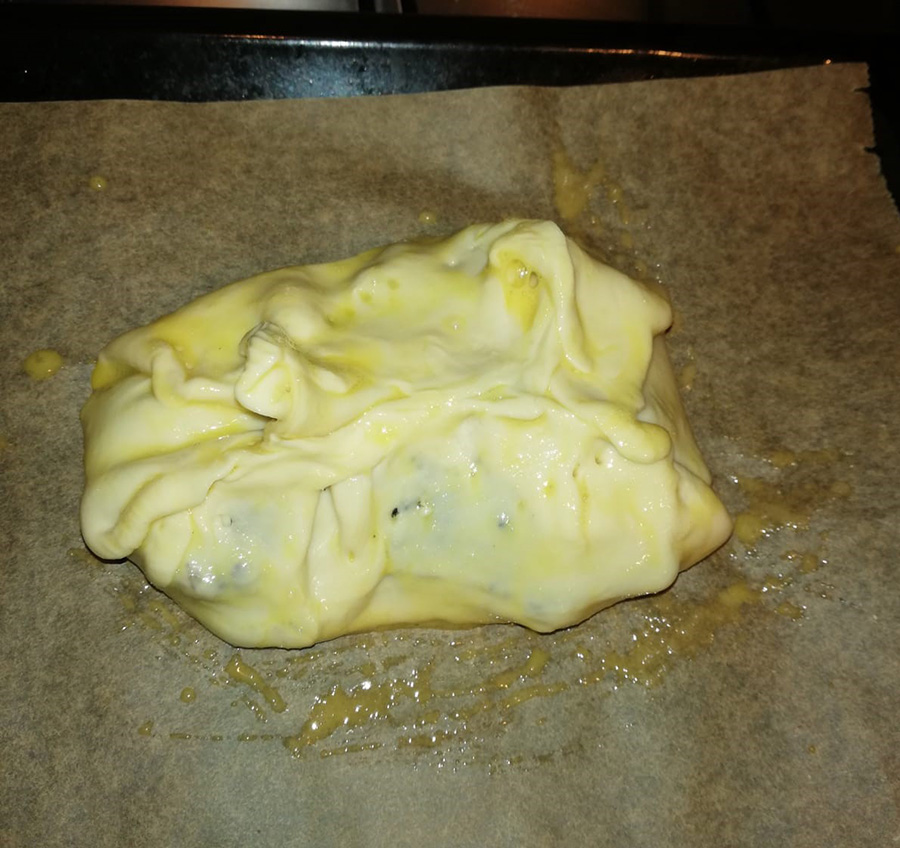
8) Meanwhile, put the pan previously used with the fillet on the heat, add the herbs and a glass of Montioni Montefalco Rosso DOC. Leave to simmer.
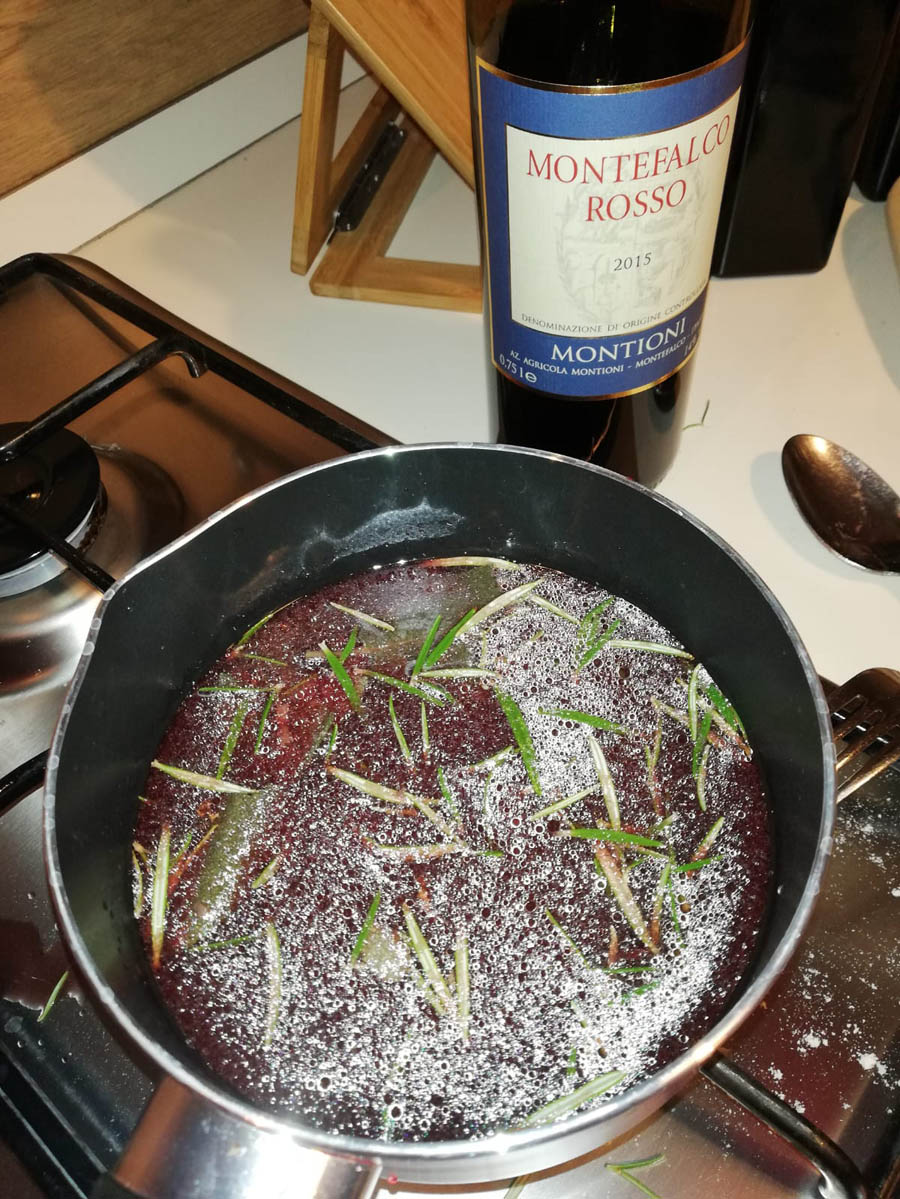
Note: If you want a thicker sauce, you can add a tablespoon of potato starch to the reduction.
And here you are, the truffle-crusted fillet with Montioni Montefalco Rosso reduction is finally ready!
The Montefalco Rosso reduction helps to create the red sauce you see in the picture for seasoning the dish, a feast for the palate!
And what about you? What do you pair with the red and white wines of the Montioni winery?
Send us all your recipes!
We look forward to seeing you again on the Montioni Blog for the next recipe!

2) Aggiungere un cucchiaino di lievito per dolci, quindi amalgamare.
3) Foderare una teglia con carta da forno
4) Fare con l’impasto dei rotolini e poi unire i due estremi di ciascun rotolino per formare una ciambellina.

5) Ripassare la ciambellina nello zucchero, avanti e dietro, poi disporre sulla teglia.
6) Infornare le ciambelline a 190° per 7 minuti

Ed ecco pronte le nostre ciambelline al Sagrantino Passito Montioni!

L’abbinamento che vi consigliamo? Ovviamente un calice di Sagrantino Passito Montioni o, in alternativa, il nostro vino più amato ovvero il Sagrantino di Montefalco DOCG Montioni!
Alla prossima ricetta del blog dell’Azienda Agricola Montioni, Tra Cucina e Cantina!
On occasion, the winemaker may decide to leave them in if the grapes themselves contain less tannin than desired. This is more acceptable if the stems have ‘ripened’ and started to turn brown. If increased skin extraction is desired, a winemaker might choose to crush the grapes after destemming.
Wine is one of the most civilized things in the world and one of the most natural things of the world that has been brought to the greatest perfection, and it offers a greater range for enjoyment and appreciation than, possibly, any other purely sensory thing.
Ernest Hemingway Tweet
Removal of stems first means no stem tannin can be extracted. In these cases the grapes pass between two rollers which squeeze the grapes enough to separate the skin and pulp, but not so much as to cause excessive shearing or tearing of the skin tissues. In some cases, notably with “delicate” red varietals such as Pinot noir or Syrah, all or part of the grapes might be left uncrushed (called “whole berry”) to encourage the retention of fruity aromas through partial carbonic maceration.
The Grapes
The quality of the grapes determines the quality of the wine more than any other factor. Grape quality is affected by variety as well as weather during the growing season, soil minerals and acidity, time of harvest, and pruning method. The combination of these effects is often referred to as the grape’s terroir.
Grapes are usually harvested from the vineyard from early September until early November in the northern hemisphere, and mid February until early March in the southern hemisphere.
In some cool areas in the southern hemisphere, for example Tasmania, harvesting extends into May. The most common species of wine grape is Vitis Vinifera, which includes nearly all varieties of European origin. The most common species of wine grape is Vitis Vinifera, which includes nearly all varieties of European origin.

Manual harvesting is the hand-picking of grape clusters from the grapevines. In the United States, some grapes are picked into one- or two-ton bins for transport back to the winery. Manual harvesting has the advantage of using knowledgeable labor to not only pick the ripe clusters but also to leave behind the clusters that are not ripe or contain bunch rot or other defects. This can be an effective first line of defense to prevent inferior quality fruit from contaminating a lot or tank of wine.
Destemming is the process of separating stems from the grapes. Depending on the winemaking procedure, this process may be undertaken before crushing with the purpose of lowering the development of tannins and vegetal flavors in the resulting wine. Single berry harvesting, as is done with some German Trockenbeerenauslese, avoids this step altogether with the grapes being individually selected.
Crushing is the process when gently squeezing the berries and breaking the skins to start to liberate the contents of the berries. Destemming is the process of removing the grapes from the rachis (the stem which holds the grapes).
In traditional and smaller-scale wine making, the harvested grapes are sometimes crushed by trampling them barefoot or by the use of inexpensive small scale crushers. These can also destem at the same time. However, in larger wineries, a mechanical crusher/destemmer is used. The decision about destemming is different for red and white wine making. Generally when making white wine the fruit is only crushed, the stems are then placed in the press with the berries. The presence of stems in the mix facilitates pressing by allowing juice to flow past flattened skins.
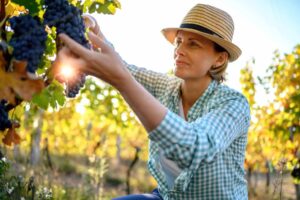
Katerina Monroe
@katerinam • More Posts by Katerina
Congratulations on the award, it's well deserved! You guys definitely know what you're doing. Looking forward to my next visit to the winery!
